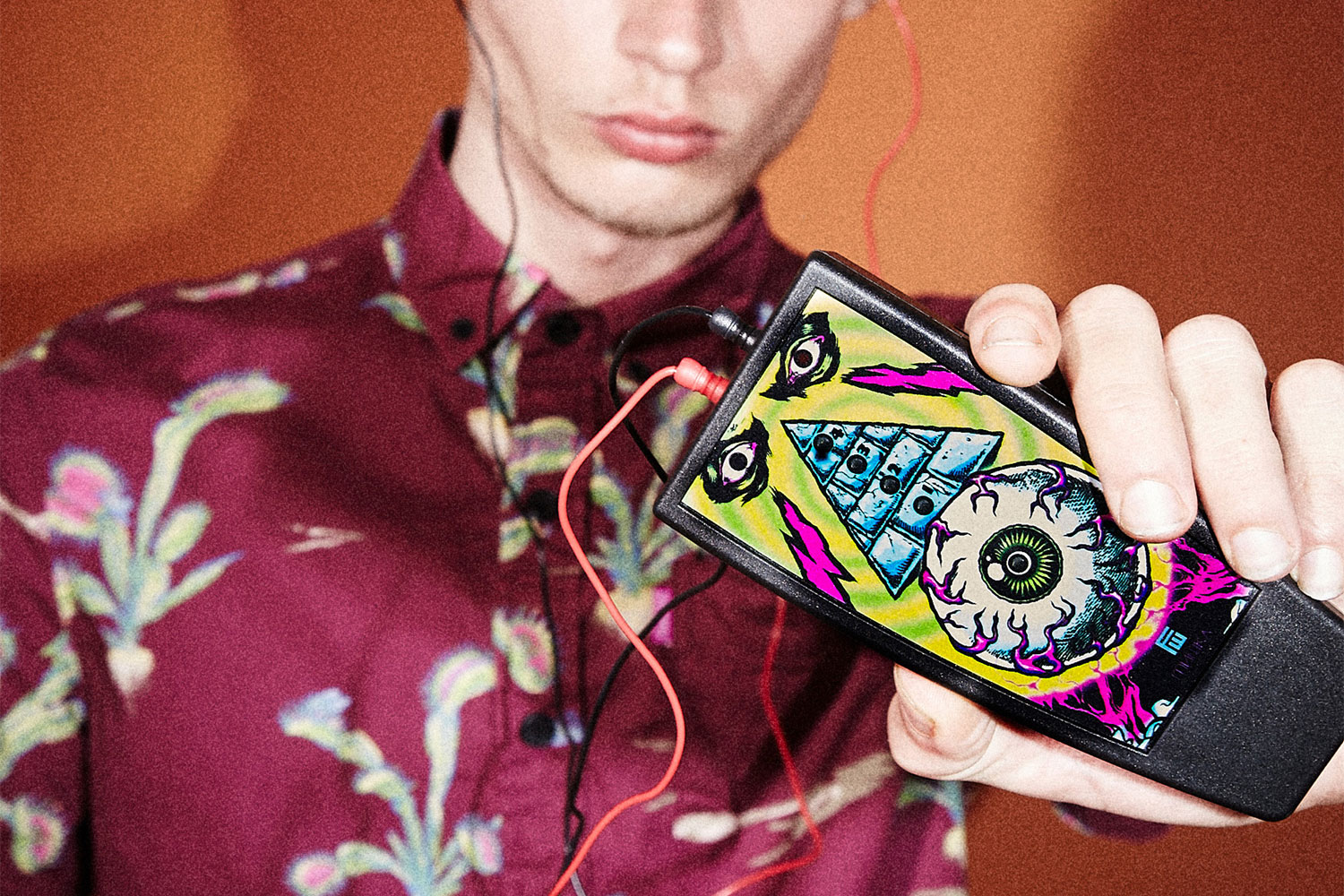Welcome to the brave new world of electrotherapy stimulation. What may have once been limited to experimental research labs is about to become as common as Prozac – and that should have Big Pharma scared. Mood alteration is becoming as simple and inexpensive as a battery-powered handheld device with two little electrodes you strap on your head. Sit there for 20 minutes receiving gentle, barely perceptible pulses, and cure your anxiety, insomnia, PTSD, depression, bipolar disorder, and more.
Mood alteration is becoming as simple and inexpensive as a battery-powered handheld device.
It’s also super cheap. The leading device in the sector, the Fisher Wallace Stimulator, retails for around $600 – although some insurance companies and Medicaid will pick up the tab. That’s less money than a single monthly dose of many mood drugs. And it won’t keep you from being able to have sex or get to sleep without another compensating drug.
Shock yourself clean
Exactly how the device works is still something of a mystery. (So is the exact function of aspirin – so that’s nothing to be too worried about.) It appears that tiny amounts of electrical current don’t actually cause resting brain neurons to fire. But they can enhance or reduce what brain cells are already doing, by changing the voltage of the nerve-cell membranes. The positive electrode makes cells more excited, while the negative one calms them down.
While the current stimulators follow a standard protocol, new research by companies like Fisher Wallace, hospitals like Mt. Sinai, and, arguably, anybody with an Arduino kit, should extend these abilities really soon.
The latest version of the brain stimulator from Fisher Wallace, designed by streetwear fashion phenom Mishka, looks like something out of The Residents’ first CD Rom, Freak Show. And the associations are clear: Here’s a new way to play with your brain.
The FDA-approved devices sold by Fisher Wallace are only available with a prescription, and are relatively tamper-proof. I tried one for a few weeks, and while it did seem to generate a sense of calm, I don’t have one of the particular conditions treated by the machine in its single, default setting.
But consciousness explorers should soon be having a field day with this technology, mapping various areas of the brain and then observing the effects of different kinds of current. An iPhone, a pulse amplifier, and a couple of electrodes should yield an almost infinite number of potential brain programs. Without worrying about how to fabricate chemicals or how to get them past the blood-brain barrier, they’ll be gaining access to what amounts to a dashboard of human brain states.
Recreational brain use
Assuming the brain is really as cooperative and externally configurable as it now appears, what would it be like to live in a world where one’s mood of choice is just a few swipes away?
The already proven ability to mitigate depression and other symptoms of mental illness may make life better in the short run, but at what cost to society?
Or what about optimizing the brain for effectiveness? Maybe electrotherapy stimulation can provide the ultimate smart drug — Adderall without the comedown, or the same inspiration provided by that microdose of LSD young Bay Area developers are said to be using these days to enhance their programming chops.
Then again, how are those who refuse such stimulation supposed to compete with those who are busy optimizing their brains for higher productivity, less sleep, or more ruthlessness? Even without any sci-fi projection of future capabilities, the already proven ability to mitigate depression and other symptoms of mental illness may make life better in the short run, but at what cost to society?
Don’t worry, be … whatever you want
Living in a world where symptoms can be eliminated with the tweak of a dial means literally turning off part of our collective nervous system. Depressed and anxious individuals are not always born that way. Sometimes, they are responding to social and environmental stress about which the rest of us may still be unaware, or unmoved to remedy.
It’s a debate initially waged between early psychoanalysts Willem Reich and Anna Freud. Reich believed neuroses were caused by greater sexual and socioeconomic stressors. Worrying that mental health patients might be canaries in the coal mine, capable of warning the rest of society of greater, systemic ills, he argued that we should “attack the neurosis by its prevention rather than its treatment.” Freud, on the other hand, believed the unhappy should be adjusted to society, not the other way around. That’s how she justified everything from blaming depressives for their symptoms to the therapeutic correction of homosexuality.
As we gain the ability to realize Freud’s vision of a treatment protocol to neutralize any symptom, we have to ask ourselves whether we really want to feel better, no matter what. As the oceans rise to cover our cities, new climate-liberated diseases spread the globe, and wealth disparity disenfranchises a majority of humans, should we just dial -in a better mental state in order not to despair? What does it matter if we feel OK?
From an ethical standpoint, using mind-altering technologies to alleviate symptoms may be more questionable than playing with our brains for the fun of it.
Editors' Recommendations
- We used an A.I. design tool to come up with a new logo. Here’s what happened
- What happens to concrete when you mix it in space? ISS astronauts investigate







